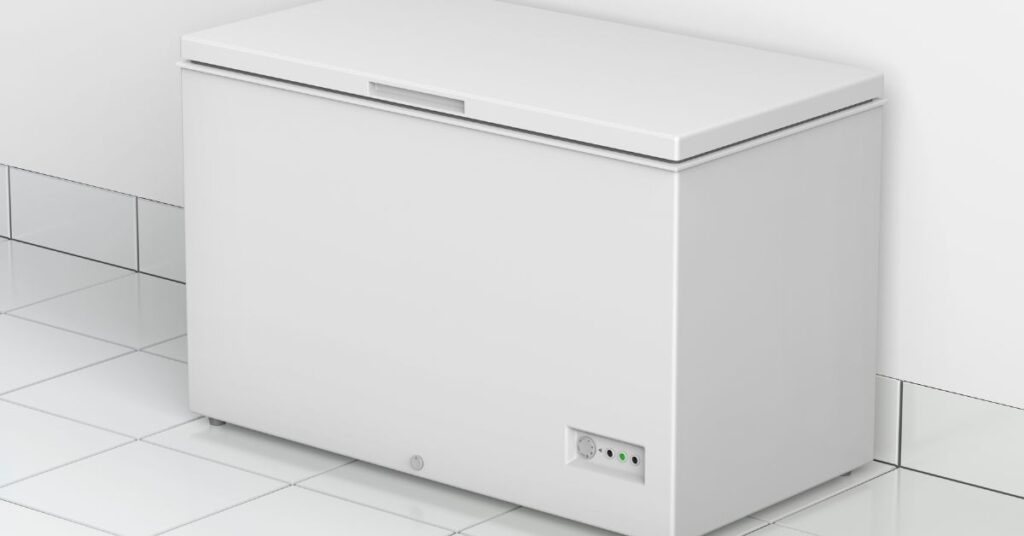Smaller freezers to use 200-300 watts, while larger ones can exceed 400 watts.
How Many Watts Is A Chest Freezer?
Chest freezers are a fantastic addition to any kitchen where bulk storage is key. But, just like any other appliance, they use electricity. Understanding how many watts a chest freezer consumes is super important. It helps with budgeting and making sure your electrical system can handle the extra load.
Unfortunately, there’s no one-size-fits-all answer! Several factors determine the wattage of your trusty food-freezing companion.
Why Wattage Matters
- Electricity Bills: Watts are a unit of power, directly impacting how much energy a device uses. More watts equal a higher cost on your electricity bill.
- Electrical Capacity: Knowing the wattage of your chest freezer ensures your electrical circuits aren’t overloaded, preventing tripped breakers and potential safety hazards.
Factors Affecting Chest Freezer Wattage
Let’s take a look at the key variables that influence your chest freezer’s energy appetite:
- Size: It’s no surprise – bigger freezers need more power. A compact 5-cubic-foot model draws far less energy than a giant 20-cubic-foot one.
- Age: Newer chest freezers are stars of energy efficiency. Older models tend to be bigger energy guzzlers because of advances in technology.
- Ambient Temperature: Where you place your freezer matters! Warmer environments force the freezer’s compressor to work harder and longer, increasing its energy consumption.
- How Full It Is: A mostly empty freezer works harder to maintain its temperature, drawing more electricity than a well-stocked one.
- Efficiency Rating: Look for Energy Star-certified chest freezers, as these are guaranteed to meet superior energy efficiency standards.
Typical Wattage Ranges
Here’s a quick table for a basic idea of wattage based on chest freezer size:
| Size (Cubic Feet) | Typical Wattage Range |
| 5-9 | 200-300 watts |
| 10-16 | 300-400 watts |
| 17+ | 400+ watts |
How to Find Your Chest Freezer’s Specific Wattage
Finding your freezer’s exact wattage is the most reliable way to plan:
- Manufacturer’s Label: Look for a label, usually on the back or inside the freezer, which lists electrical specifications, including wattage.
- Owner’s Manual: If you still have the manual, it will include detailed information about your freezer’s power requirements.
- Online Search: Search the manufacturer’s website using your chest freezer’s model number for all the technical details.
Ways to Reduce Your Chest Freezer’s Energy Use
Want to get the most out of your chest freezer without breaking the bank on electricity? Here are a few tips:
- Location is Key: Choose a cool spot for your freezer, away from direct sunlight and heat sources.
- Keep It Full: A well-stocked freezer is a happy (and efficient) freezer.
- Defrost Regularly: Frost buildup makes your freezer work harder, wasting energy.
- Maintain Door Seals: Ensure the seals are tight to prevent cold air from escaping.
- Set the Right Temperature: Your freezer doesn’t need to be an arctic blast – 0°F (-18°C) is the ideal temperature.
Measuring Your Chest Freezer’s Real-time Wattage
Knowing your chest freezer’s theoretical wattage is great, but what about actual, real-time usage patterns? Here’s how you can get that info:
- Kill A Watt Meter: This handy device plugs into your outlet, and your chest freezer plugs into it. It displays real-time wattage, how much electricity it uses over time, and even estimated costs.
- Smart Plug with Energy Monitoring: Smart plugs turn ordinary appliances ‘smart.’ Look for models with power tracking to reveal the real-time wattage and energy usage of your freezer.
Why Measure Real-Time Wattage?
- Pinpoint Usage Spikes: Does your freezer guzzle power at specific times? Tracking helps identify patterns, like if defrost cycles cause power surges.
- Efficiency Tweaks: Experiment! See how changing settings or habits impacts energy use in real-time.
- Problem Diagnosis: Sudden spikes in wattage could signal an issue with your freezer, prompting early troubleshooting.
More Tips to Maximize Your Chest Freezer’s Efficiency
Saving energy is good for your wallet and the environment. Here are more ways to make your chest freezer a model of efficiency:
- Minimize Door Openings: Plan what you need before opening up, and limit the time the door stays open to keep the cold air from escaping.
- Organize, Organize, Organize: Know what’s inside and where! Less rummaging means less cold air lost.
- Pre-Freeze Items: Adding room temperature food works your freezer extra hard. Freeze items in smaller portions first.
- Allow Space Around the Freezer: Prevent restricted airflow, which can make the compressor work harder.
Energy-Saving Features to Look For
If you’re shopping for a new chest freezer, look for these features to save on energy costs:
- Thick Insulation: Better insulation means less heat transfer, helping your freezer maintain a consistent temperature with minimal effort.
- Efficient Compressor: The compressor is the heart of the freezer – modern, efficient ones use less energy.
- Manual Defrost Mode: While auto-defrost is convenient, it uses energy. A manual defrost option allows you to manage it on your own schedule for cost savings.
Extra Energy-Saving Considerations
- Temperature Alarms: These alert you if the freezer’s temperature rises unexpectedly, preventing food spoilage and wasted energy.
- Solar Power Options: If off-the-grid living is your style, consider chest freezers specifically designed for solar power systems.
Conclusion- How Many Watts Is A Chest Freezer?
So, how many watts is a chest freezer? The answer depends on various factors, but now you’re armed with the knowledge to determine the exact wattage of your specific model. Remember, while wattage is important, smart usage and energy-saving practices can significantly reduce your chest freezer’s impact on your power bill.
